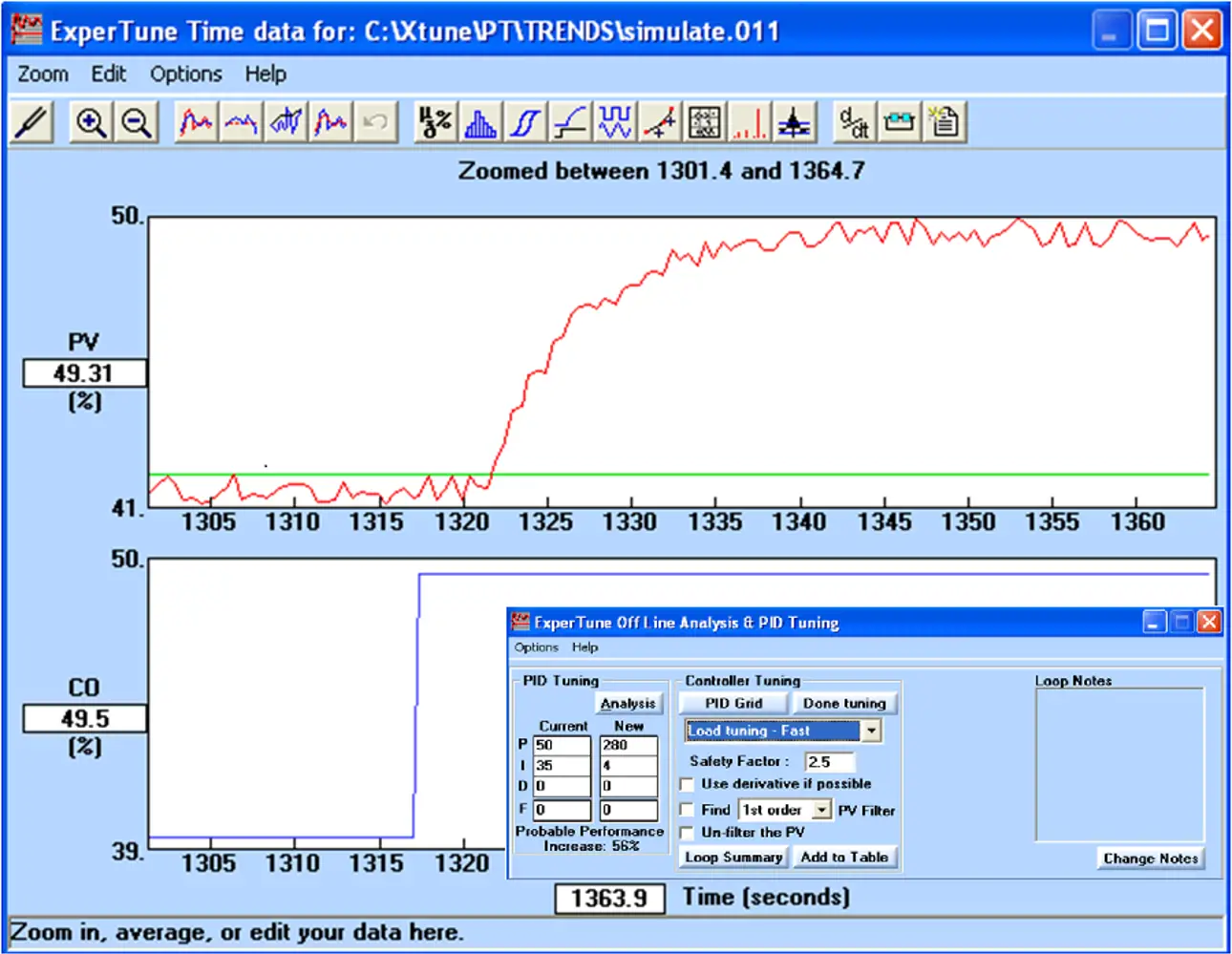Can I develop a good response model without a bump test?
Certainly the simplest approach is to use a traditional “bump test”. Put the loop in manual, and make a step change to the controller output. The process responds, and you can easily measure the response, calculate the process model, and then apply tuning rules. But bump tests can be problematic: operators are resistant to putting loops in manual, the bump test is an upset to the process, so it can have quality, environmental, or safety impact. And it can take quite some time before the process stabilizes, especially if it is a thermal process. For example, bumping a distillation column might take 12 to 24 hours for a full response.
An alternate type of bump test is a setpoint change. Like the manual bump test, the control output moves, and the process moves in response.
Other types of intentional movement of the Control Output can also be used: pulse tests, doublet pulses, ramps, and pseudo-random changes to control output or setpoint may give enough process excitation to deliver a good model. These techniques can be very useful in reducing the time required in large, slow processes, like we typically find in chemical plants and oil refineries.
Valmet PlantTriage’s Active Model Capture Technology (AMCT) will automatically find process models when output changes, setpoint changes, or other suitable sequences occur. This greatly reduces the work needed to develop models. You can simply ask the operator to make some setpoint changes, and PlantTriage will automatically find models.
Disturbances, however, are NOT useful for process modelling. In the case of an upset, or disturbance, a loop in automatic will move the controller output in response to the upset. But here is the problem: You don’t know how much process response comes from the disturbance, and how much comes from the control response.
So, the short answer to the original question is: Yes, you do need a bump test. However, the bump test does not need to be a traditional bump test. And Valmet PlantTriage’s AMCT can greatly speed up the modelling work by finding and determining models (and tuning!) based on normal operator actions.
Text originally published in 2014, and slightly updated in April 2022 & July 2023, due to the company & product name changes.





